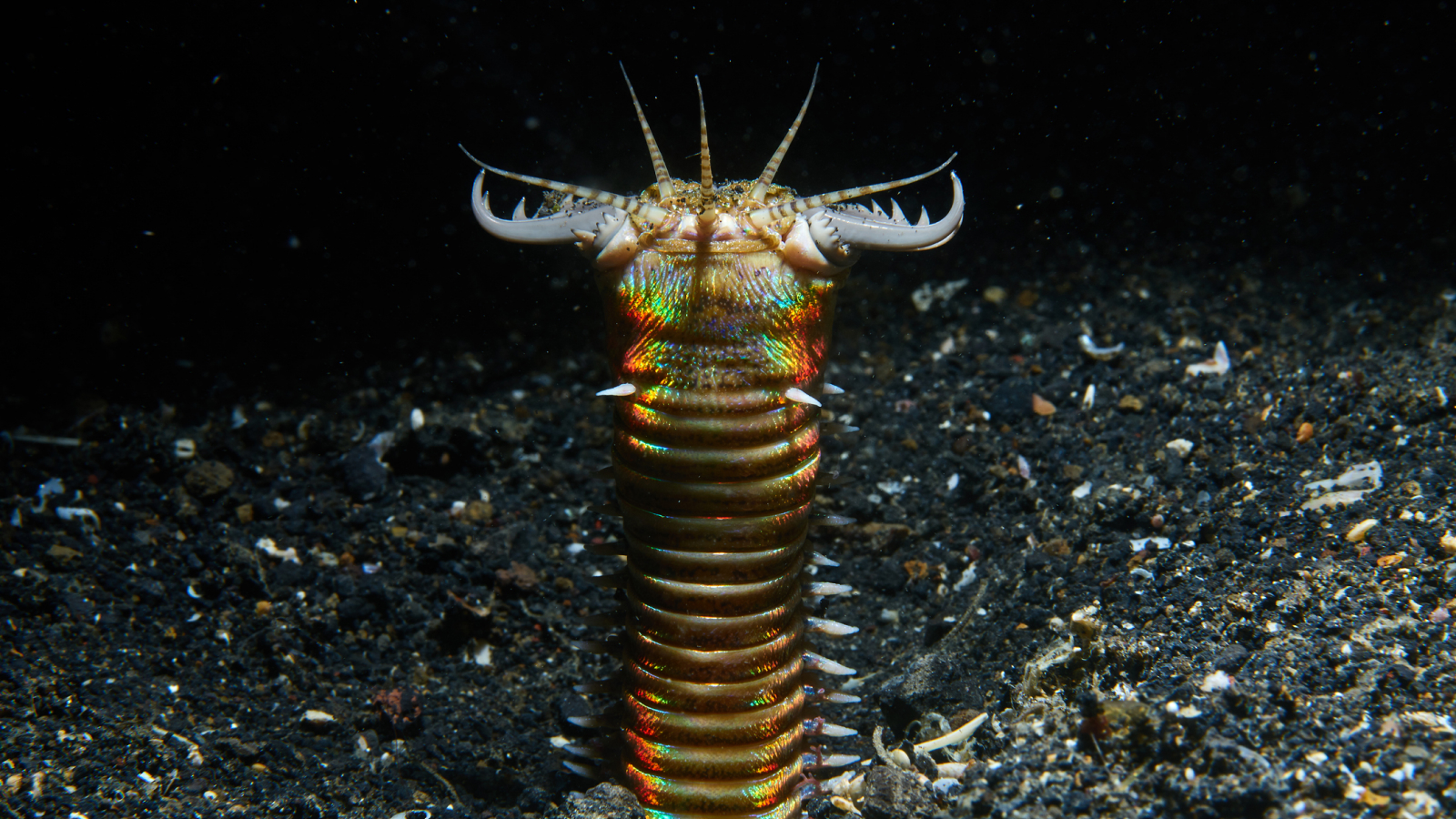Sand striker: The glittering 'bobbit' worm that chops fish in half with its retractable jaws
Sand strikers — also known as bobbit worms — reach up to 10 feet long. They have razor-sharp jaws they use to catch unsuspecting fish and can split into bits to regenerate.
Name: Sand striker (Eunice aphroditois), also known as a bobbit worm
Where it is found: Tropical shallow waters around the world
What it eats: Fish and other invertebrates
Why it is awesome: With its scientific name referencing Aphrodite, the Greek goddess of love and beauty, the sand striker is a stunning, glittering marine worm — and a terrifying ambush predator.
It buries its long body in the seafloor during the day and waits with its antennae out to lure unsuspecting prey into its retractable jaws, which feature two pairs of serrated plates that act like scissors and can snap a fish in half. Sand strikers have little to no vision, but their five antennae use light and chemical receptors to sense nearby prey and strike, before going back to its burrow with its meal.
At night, it is bolder and goes on the hunt, partially emerging from its burrow to lunge at passing prey. As if that weren't scary enough, the sand striker may also use toxins to subdue or kill its prey. This toxin allows the sand striker to prey on and digest animals larger than itself.
The fish don’t always go without a fight, though. They have been recorded mobbing a sand striker, blowing jets of water at the worm until it retreats into its burrow, allowing them to forage safely.
Get the world’s most fascinating discoveries delivered straight to your inbox.

The sand striker can cause chaos in aquariums if it's accidentally introduced while rock is being added to a tank. As a predator, it will gradually munch its way through any captive fish, managing to remain undetected for years thanks to its impressive hiding ability. To make matters more complicated, if handled, the sand striker will break into pieces, some of which will survive and begin to regrow.
Related: Strange sea worms have butts that grow a brain before wriggling off to find a mate
This creepy predator can reach incredible lengths. One individual, found hidden within a float of a mooring raft in Japan in 2009, measured almost 10 feet (3 meters) long.
There's a common misconception that the sand striker doesn't have a brain, but in reality it does — it's just very different to a human brain. They have a cerebral ganglion, a cluster of cells within the autonomic nervous system.
For many years, this worm had been informally named the bobbit worm, thanks to the highly publicized trial of Lorena Bobbitt, who was found not guilty by reason of temporary insanity of cutting off her husband's penis with a knife.

Megan Shersby is a naturalist, wildlife writer and content creator. After graduating from Aberystwyth University with a BSc (Hons) degree in Animal Science, she has worked in nature communications and the conservation sector for a variety of organisations and charities, including BBC Wildlife magazine, the National Trust, two of the Wildlife Trusts and the Field Studies Council. She has bylines in the Seasons anthologies published by the Wildlife Trusts, Into The Red published by the BTO, and has written for the BBC Countryfile magazine and website, and produced podcast episodes for its award-winning podcast, The Plodcast.



